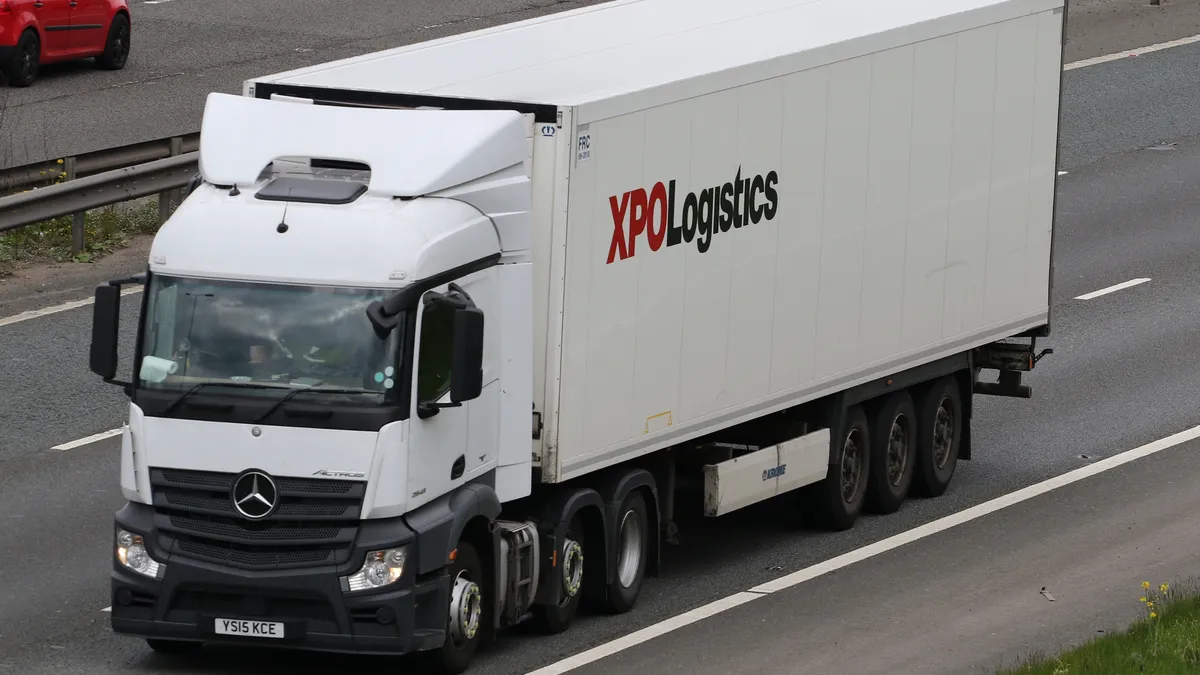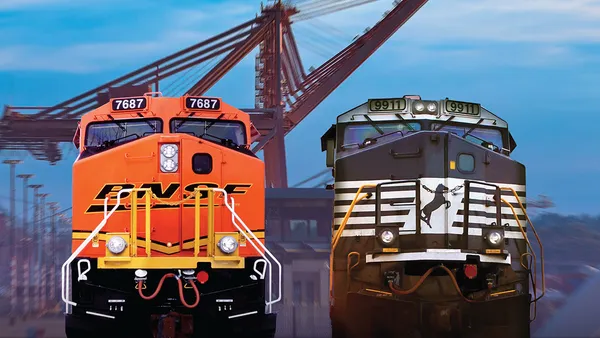Dive Brief:
- Smaller shipments of goods via LTL and parcel trucks "have increased significantly" in the last few months, according to a Wednesday blog post by Vivek Vaid, chief technology officer at FourKites. September's LTL shipments were up 42% compared to March.
- Vaid said shipment counts declined in March and April, but then climbed in May, with a month-over-month growth rate of 2% in May, 20% in June, 8% in July and 1% in August. August was the peak month in the trend, with a 3% decline in September, Vaid said. The growth was not evenly spread through industries, as food, consumer packaged goods and retail companies accounted for about 80% of the growth, according to Vaid.
- The TL spot market is also affected by stronger consumer demands, according to DAT, with the average rate hitting a record high of $2.46 per mile for the week ending Sunday. That rate was 21% higher than the average July rate, DAT noted. Flatbed rates were $2.41 per mile, up 11% from July's average rate. Reefer rates were $2.57 per mile, also up 11% from July's average rate.
Dive Insight:
The data from DAT and FourKites comes several weeks after analysts and research firms predicted higher rates were on the way.
ACT Research's spot leading indicator, derived from survey data, signaled rates will be up by about 30% YoY over the next few months, according to Tim Denoyer, ACT Research vice president and senior analyst, speaking during a webinar in mid-September.
The surge in rates is occurring even though volumes in August were 3% lower than August 2019, according to DAT's September market report. DAT analysts, writing about the paradox, said the reason is different sectors experienced "dramatically different situations." Retail and consumer goods had 10% overall volume increases, while industrial and some other sectors saw 10% decreases, DAT analysts wrote.
Vaid wrote retail and food-and-beverage shipments saw surges. In August, food-and-beverage shipments rose 17% to their highest 2020 value, from their lowest in April, Vaid wrote. And the surge is also affecting other parts of the supply chain: Warehouse employment has reached the highest recorded level, with 1.25 million workers in September, according to preliminary numbers from the Bureau of Labor Statistics. The peak comes as e-commerce sales are at their highest level, according to Census data.
For carriers, contract rates are likely next to rise. There is usually a six-month lag between spot rates and contract rates, but talk has already begun among carriers about boosting contract rates, if only to attract more drivers.
Werner CEO Derek Leathers told analysts during a July 29 conference call on Q2 earnings that he planned to have "real, open, frank discussions" with shippers, especially if they need extra capacity. Leathers told Transport Dive in September that the driver shortage is causing some of the capacity issues. And it's why the trucking sector cannot quickly add capacity, even as signs point to surging demand.
"We clearly have a supply and demand imbalance," Leathers said. "Normally, the market reads that by adding capacity ... It's going to be a long time to add back that capacity."














